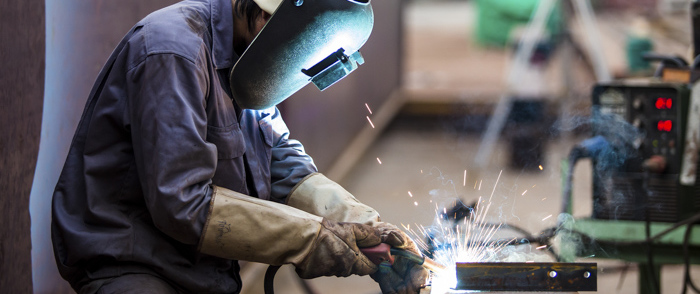The Manufacturing Industry Workforce Today

This article was updated on August 8, 2018.
In 1960, one in four Americans was employed in the manufacturing industry, according to CNNMoney. Today, that figure is less than one in 10. Americans have become less likely to clock in at a factory. It's clear the manufacturing industry workforce has shrunk. However, the reasons why are more complex. Technology, global economics and the U.S. economy have all contributed to the decline of goods-producing jobs. For HR leaders in the industry, the last 60 years have had a widespread impact on talent, wages and more.
Where Have Manufacturing Jobs Gone?
The U.S. has lost 5 million manufacturing jobs since 2000, according to CNNMoney.
The Bureau of Labor Statistics (BLS) reports that the current unemployment rate is 4.9 percent. The U.S. economy is quickly reaching full employment. Slowed growth in industries like manufacturing — which is traditionally a male-dominated field — has had a negative impact on job growth for men. Many displaced workers or talent who may have entered manufacturing careers in the 1960s are now working in other fields. Health, technology and business services are currently the fastest growing industries, according to the BLS.
How the Manufacturing Industry Lost Its Appeal
The appeal of a manufacturing career may have diminished in 2016. According to the ADP Research Institute® Q3 Workforce Vitality Report (WVR), the wage growth in the manufacturing sector has grown only 1.6 percent, while wage growth in the information and professional services sectors has grown at almost triple that rate (4.3 and 4.6 percent, respectively). For millennial and generation Z talent, manufacturing careers may not be viewed as the most profitable choice.
It's also important to consider the role of technology and automation in the decline of manufacturing jobs. According to Boston Consulting Group, 10 percent of manufacturing tasks are currently performed by robots and this could rise to 25 percent by 2025. While automation varies by region and organization, technology has replaced workers on many assembly lines. Individuals could fear how automation will affect the industry and might believe it will hurt their chances of wage and career growth.
The Challenge: A Talent Shortage
Despite job losses in the goods-producing sector, there's not an excess of applicants at manufacturing firms. In fact, new talent is unlikely to enter the field by the time baby boomers retire and workers switch industries. TradeVistas reports how 2 million manufacturing jobs could go unfilled in the coming years because of a skills gap.
Retention Means Raises
The WVR indicates individuals who switched out of full-time jobs in manufacturing in the third quarter of 2016 had wage growth of -.04 percent, while those who stayed in their positions earned 4 percent more. So it's clear that HR leaders in manufacturing industries at least recognize the importance of retention and are giving raises accordingly.
What's Next for Manufacturing?
Most HR leaders in the industry will need a strong talent strategy to proceed. Building a skilled manufacturing industry workforce will be key for firms to remain competitive as they adopt automation and maintain productivity among industry-wide wage pressures. Adopting a more varied approach to HCM should allow HR leaders to attract and retain talent among fierce competition for skilled workers.



